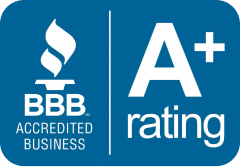You pay higher monthly rates for both Medicare Part B and Part D if your income exceeds a certain threshold. The cost of Medicare Parts A and C is not based on your income.
Based on the income you reported on your 2021 tax return, Medicare Part B and Part D premiums will be determined for you in 2023. No additional fee will be charged for Part B or Part D for individuals earning $97,000 or less, or for joint filers making $194,000 or less.
Medicare premiums are tier-based based on income. For instance, Medicare Part B premiums increase by around 40% for individual tax filers earning between $97,000 and $123,000 and by about 240% for those earning above $500,000.
You may be eligible for programs that lower your Medicare costs, such as monthly premiums, deductibles, and coinsurance, depending on your income and other financial resources. These initiatives establish their income caps.
What are the income limits for Medicare in 2023?
You won’t be subject to higher rates for Medicare Part B (medical coverage) and Part D (prescription coverage) in 2023 if you filed a tax return as an individual and reported a modified adjusted gross income (MAGI) of $97,000 or less on your 2021 tax return. The income threshold for joint filers is $194,000 or less.
Your monthly payment for Medicare Part B and Medicare Part D insurance is determined by the Medicare income restrictions. You’ll pay more for Part B and Part D if your income exceeded the Medicare restrictions.
What are my Medicare costs in 2023?
In 2023, the majority of Americans will pay the normal Medicare Part B premium. Depending on your income, you may also have to pay Medicare an additional sum in addition to the premium for the Part D plan you choose.
Individual 2021 income | Joint 2021 income | Monthly Part B rate | Part B % increase | Extra Part D amount |
|---|---|---|---|---|
| Up to $97,000 | Up to $194,000 | $164.90 | $0 | |
| $97,001 up to $123,000 | $194,001 up to $246,000 | $230.80 | 40% | $12.20 |
| $123,001 up to $153,000 | $246,001 up to $306,000 | $329.70 | 100% | $31.50 |
| $153,001 up to $183,000 | $306,001 up to $366,000 | $428.60 | 160% | $50.70 |
| $183,001 up to $500,000 | $366,001 up to $750,000 | $527.50 | 220% | $70.00 |
| $500,001 or above | $750,001 or above | $560.50 | 240% | $76.40 |
Your Railroad Retirement Board or Social Security benefit payments will automatically be reduced by the Part B and Part D premiums. Medicare will issue you a charge if you don’t get a monthly payment.
Medicare Part B premiums
The regular monthly Medicare Part B premium for 2023 is $164.90. However, if you reported earnings of more than $97,000 on your individual 2021 tax return or more than $194,000 on a combined return, you will be subject to higher rates. People who earned $100,000 in 2021, for instance, would pay $230.80 a month for Medicare Part B in 2023.
An income-related monthly adjustment amount, or IRMAA, is the name of the additional fee. Based on the modified adjusted gross income on your tax return, the Social Security Administration (SSA) calculates your IRMAA. The SSA will write you an IRMAA letter informing you of your payment amount if it determines that you owe a higher premium.
Part B immunosuppressive drug coverage only
After a kidney transplant, this new Medicare benefit will continue to cover immunosuppressive medications beginning in 2023. This benefit is not intended to serve as a comprehensive health insurance plan and is distinct from Original Medicare Part B.
Individual 2021 income | Joint 2021 income | Monthly rate | % increase | |
|---|---|---|---|---|
| Up to $97,000 | Up to $194,000 | $97.10 | ||
| $97,001 up to $123,000 | $194,001 up to $246,000 | $161.80 | 67% | |
| $123,001 up to $153,000 | $246,001 up to $306,000 | $258.90 | 167% | |
| $153,001 up to $183,000 | $306,001 up to $366,000 | $356.00 | 267% | |
| $183,001 up to $500,000 | $366,001 up to $750,000 | $453.10 | 367% | |
| $500,001 or above | $750,001 or above | $485.50 | 400% |
Medicare Part D premiums
Medicare Part D rates, in contrast to Medicare Part B rates, are established by distinct insurance companies and might vary per plan. If you have Part D, your insurance provider will receive a monthly payment from you to cover your expenses. However, if you are charged more because of your income, you must pay Medicare the additional sum.
The additional Part D premium for 2023 is calculated using the $32.74 national average.
Medicare Part D income restrictions are based on the same quantities as Part B. You will have to pay an additional premium for Medicare Part D if your modified adjusted gross income in 2021 exceeded $97,000 or $194,000, depending on your filing status. For instance, if you made $124,000 in 2021 and filed a tax return as an individual, you would have to pay $31.50 more per month for Part D in 2023.
Medicare Extra Help 2023 income limits
Medicare Extra Help 2023 income limits are not yet available but are due to be released soon.
The maximum allowed income in 2022 is $27,465 for a married couple living together and $20,385 for an individual. Additionally, there are restrictions on your other financial options: If you are single, your total assets can’t exceed $15,510; if you are married and living with your spouse, your total assets can’t exceed $30,950. For you to be eligible for Extra Help, you must fulfill each of these requirements.
2022 income limit | 2022 resource limit |
|---|---|
|
|
In Alaska and Hawaii, the limits are a tiny bit higher. Even if your income exceeds the limits indicated, you may still be eligible for assistance if you have income from employment.
The Medicare Extra Help program offers assistance with monthly Part D expenses such as premium payments, deductibles for prescription drugs, and copayments for medications. A maximum of $4.15 for generic prescriptions and $10.35 for brand-name prescriptions will be required of you in 2023. The expected monthly savings for enrollees of Extra Help is $425.
Applying for Medicare Extra Help can be done online, in person at a local Social Security office, or by phone at 800-772-1213. (TTY 800-325-0778).
Only those with Original Medicare and a different Part D prescription coverage are eligible for Extra Help. Extra Help cannot be used to lower drug expenses under a Medicare Advantage (Part C) plan.
Income limits for Medicare Savings Programs
The 2023 income limits for Medicare Savings Programs (MSPs) have not been announced but are expected to be available soon.
There are four different types of MSPs, and each has its requirements for resources and money. You must meet both conditions to be eligible for a savings program, just like with the Extra Help program, where income and resources are evaluated independently.
Program | Description | 2022 income limit | 2022 resource limit |
|---|---|---|---|
| Qualified Medicare Beneficiary (QMB) | Helps with Part A and Part B cost-sharing and Part B premiums |
|
|
| Specified Low-Income Medicare Beneficiary (SLMB) | Helps pay the Part B premium |
|
|
| Qualified Individual (QI or QI-1) | Helps pay the Part B premium |
|
|
| Qualified Disabled and Working Individuals (QDWI) | Helps pay the Part A premium |
|
|
In Alaska and Hawaii, the limits are a tiny bit higher. Even if your income exceeds the limits indicated, you may still be eligible for assistance if you have income from employment.
MSPs are federally sponsored initiatives that each state Medicaid agency oversees. These initiatives aid those with low incomes and resources in covering the premiums, deductibles, copayments, and coinsurance associated with Medicare.
Through the Medicaid office in your state, you can submit an MSP application. To get in touch with them, select your state here.
Frequently asked questions
Are there income limits for Medicare Part A?
No, Medicare Part A has no income restrictions. You are often automatically enrolled in Part A at no cost if you are receiving Social Security benefits and meet the requirements for Medicare Part A due to age or disability.
How can I get financial help for Medicare costs?
Through Medicare Extra Help or one of the Medicare Savings Programs (MSPs), which are administered by state Medicaid offices, you may be able to get assistance with your Medicare expenses if you are eligible. The Program of All-Inclusive Care for the Elderly (PACE), which is also managed by your state’s Medicaid office, can provide information on eligibility requirements and application procedures.
Can I request a change to my IRMAA?
Yes. You might ask for a decrease in your IRMAA if something happened that caused your income to decrease. For more information, contact Social Security at 800-772-1213 (TTY 800-325-0778) or fill out Form SSA-44 and send or deliver it to your neighborhood Social Security office.
Sources
Several sources, including Medicare.gov, CMS.gov, SSA.gov, and Benefits.gov, were used to gather information on Medicare income restrictions, Medicare Savings Programs, and the Extra Help program.








